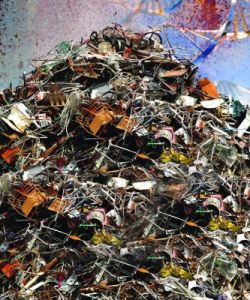The lingering death of junk DNA

A long time before scientists decoded the human DNA, evolutionists decided that over 95% of the DNA must be useless—“junk DNA”. Evolution demanded it—there is too much variation, too much DNA to mutate, and too few generations in which to get it all done. They suggested the junk DNA was just padding between the important parts.
With the decoding of the human DNA showing that only 2% of the DNA coded for proteins, the “junk DNA” idea seemed vindicated. Because no one knew what the 98% did, it was easy to jump to the fallacious conclusion it did nothing.
Evolutionists used this “junk DNA” as evidence for evolution, employing circular reasoning. From evolutionary theory, they decided that most of the DNA was junk. So, if two organisms—say a human and a chimp—shared the same DNA sequence of some junk DNA, the only explanation must be that they shared a common ancestor that passed on that sequence to both descendants. Kazam! Evolution proven!
Well, like the evolutionists’ vestigial organs argument,1 the junk DNA idea has been unravelling with the advance of scientific knowledge. One of the major classes of junk DNA consists of similar sequences that seemed to occur randomly in the DNA. Evolutionists claimed that these were leftover bits of ancient virus infections where some of the virus inserted itself into the host’s DNA. Because of this, they were called retro-transposons.2
The idea of this DNA being junk influenced many scientists to disregard it—so much so that when one scientist decided to patent the junk DNA of all organisms, he met little opposition.3
A number of studies have now confirmed that this “junk DNA” is functional. A 2004 study suggested that this class of DNA, comprising more than 1/3 of mouse DNA, is involved in controlling the complex sequence of events during embryo development.3 A study in 2009 showed that retro-transposons are located before and after protein coding genes; they do not occur at random. Ones located before the protein-coding genes enable multiple readings for the genes: the genes can produce different proteins using different starting points in the supposedly “junk” DNA. Some enable genes to be ‘read’ in the opposite direction to normal, again producing an entirely different protein. Ones that follow the genes regulate the gene activity, controlling how much of the protein the cell produces. The researchers found some 23,000 such likely regulatory regions in the ‘junk’.4,5
Clearly, the idea of junk DNA is junk science. Not only is evolution bad for theology; it’s bad for science as well.
References and notes
- See ‘Vestigial’ Organs Q&A. Return to text.
- The RNA genome of the virus is reverse-engineered to a DNA (“retrotransposed”) and inserted into the host DNA—hence the term “retro-transposon”. Some viruses are able to do this, HIV for example. Return to text.
- Batten, D., No joy for junkies, Journal of Creation 19(1):3, 2005. Return to text.
- Carter, R., The slow, painful death of junk DNA, 9 June 2009. Return to text.
- Carter, R., Splicing and dicing the human genome: Scientists begin to unravel the splicing code, 24 June 2010. Return to text.



Readers’ comments
Comments are automatically closed 14 days after publication.